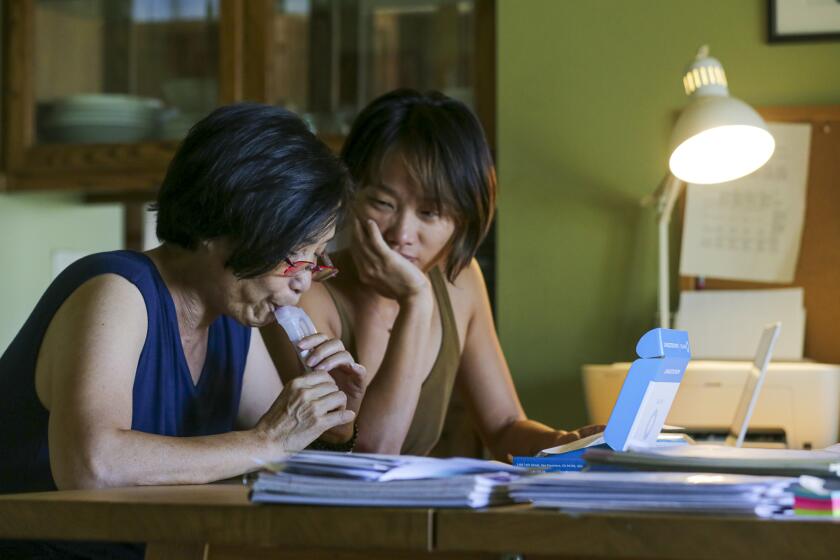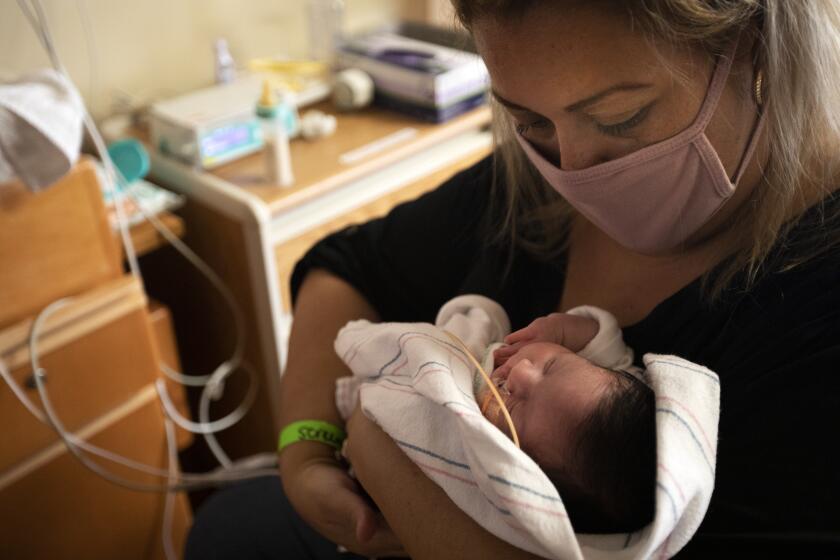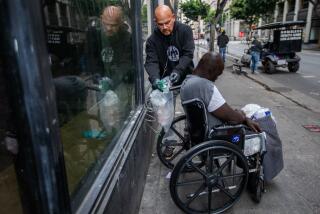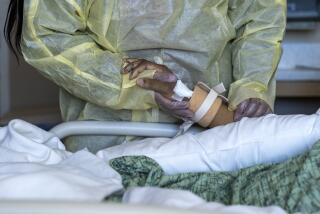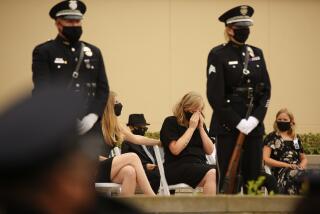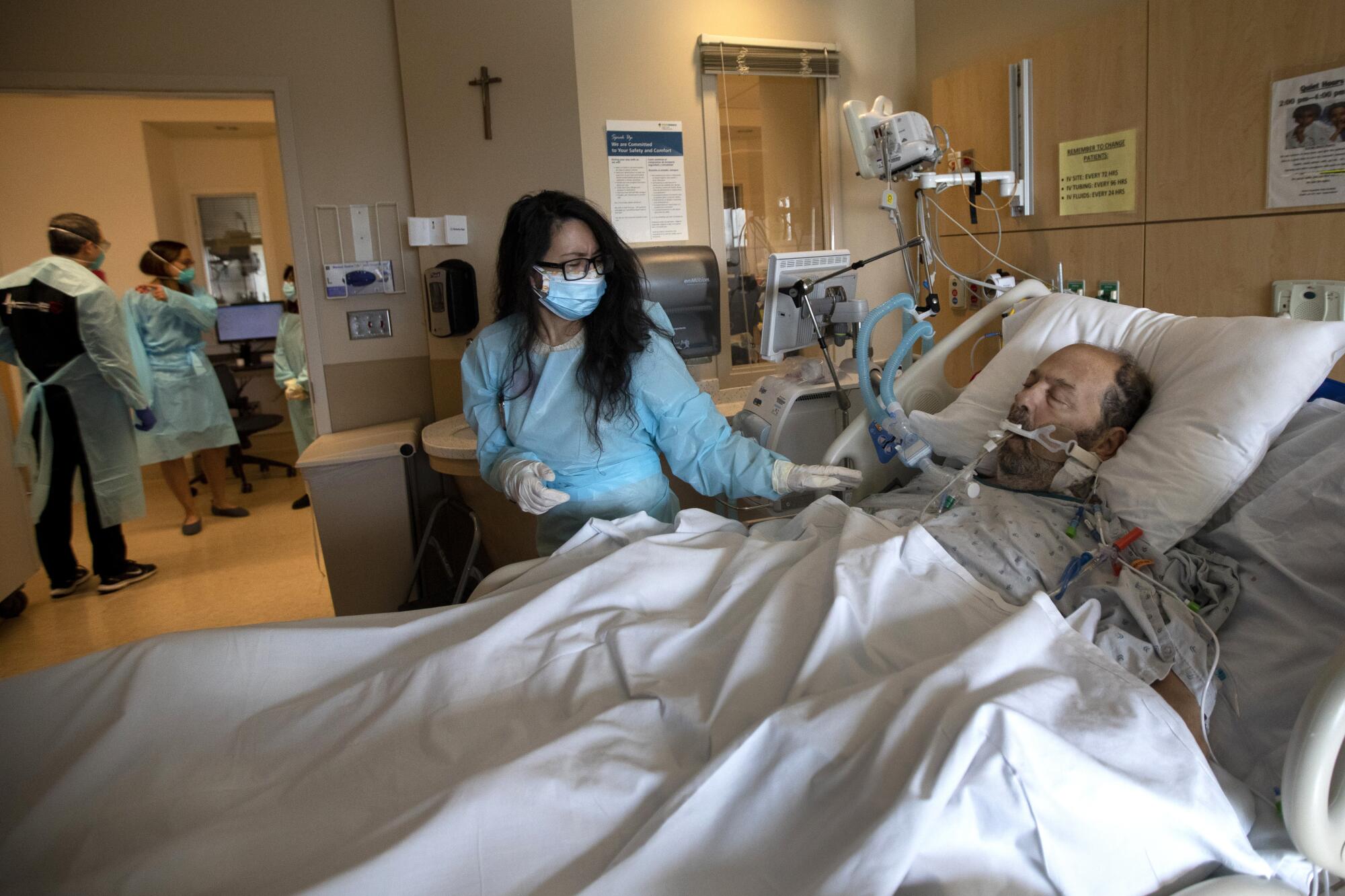
- Share via
Bob Harris gave his family one final gift.
He told them he did not want to be placed on a ventilator. He was at peace and ready to meet Jesus. Then, when his family was just not prepared for him to stop the fight against COVID-19, he agreed to be intubated. For a week.
A week wasn’t enough.
His wife, Marilou, had dropped him off at the emergency room on Oct. 29 with a hopeful, “Sweetie, I’ll come and get you tomorrow morning.” The 61-year-old motivational speaker had felt sick enough that day to seek a doctor’s care — but well enough to mail bills and his absentee ballot en route to Providence Holy Cross Medical Center in Mission Hills.
One week on the ventilator turned into three, and in early December the Harris family faced a terrible decision.
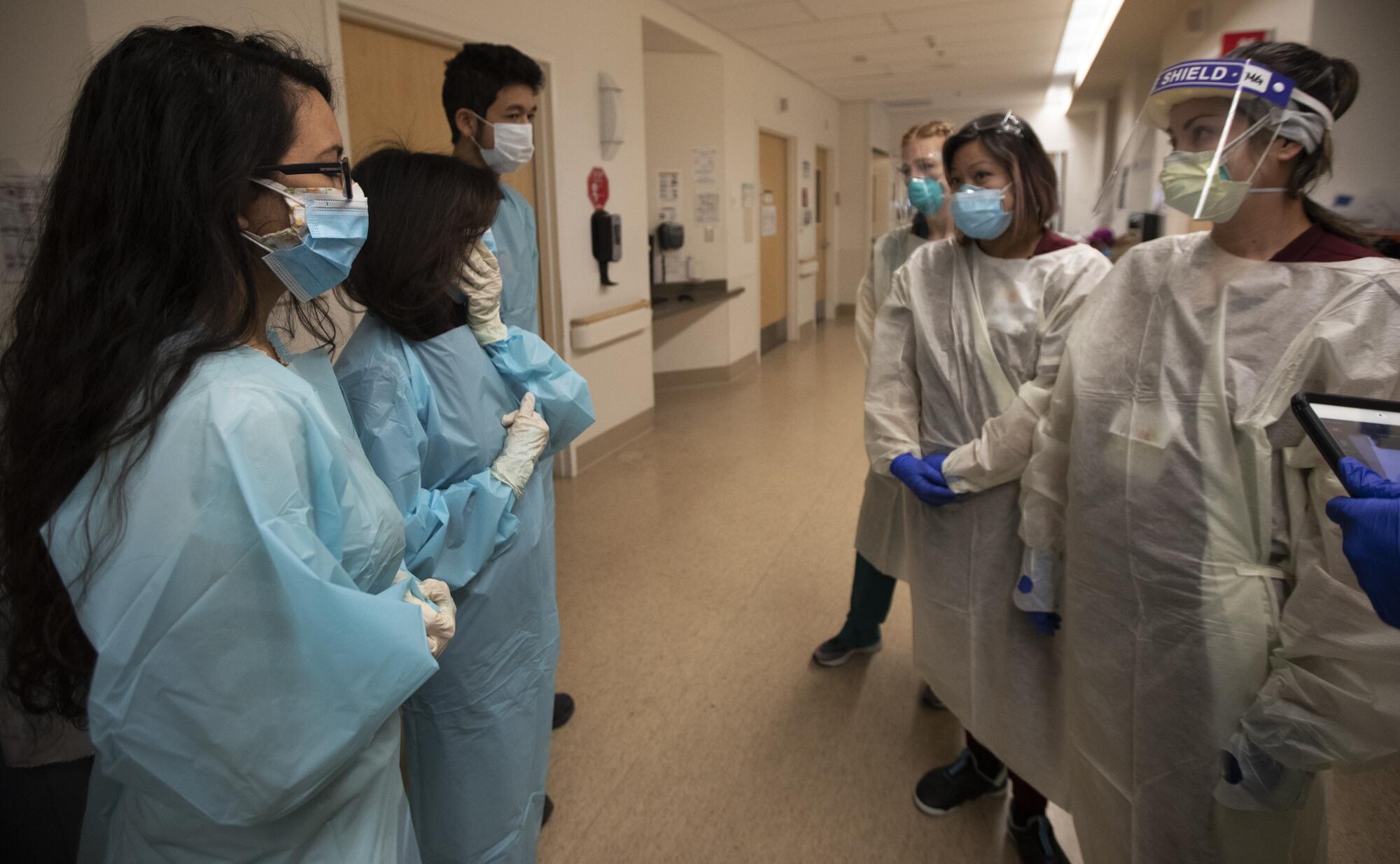
If Bob were to continue on the ventilator, he would have to have a tracheostomy — a surgical procedure in which a hole would be cut into his neck. That way, the ventilator could pump oxygen into his lungs through a tube in his airway instead of one down his throat.
Marilou, Michelle and Michael had not seen their husband and father in person for 36 days. They hadn’t held Bob’s hand or stroked his forehead. There’d been phone calls and texts and video meetings. But once he was placed on the ventilator, even his voice was silenced. In the cruel calculus of COVID-19, there was only one way they could be with him in the hospital.
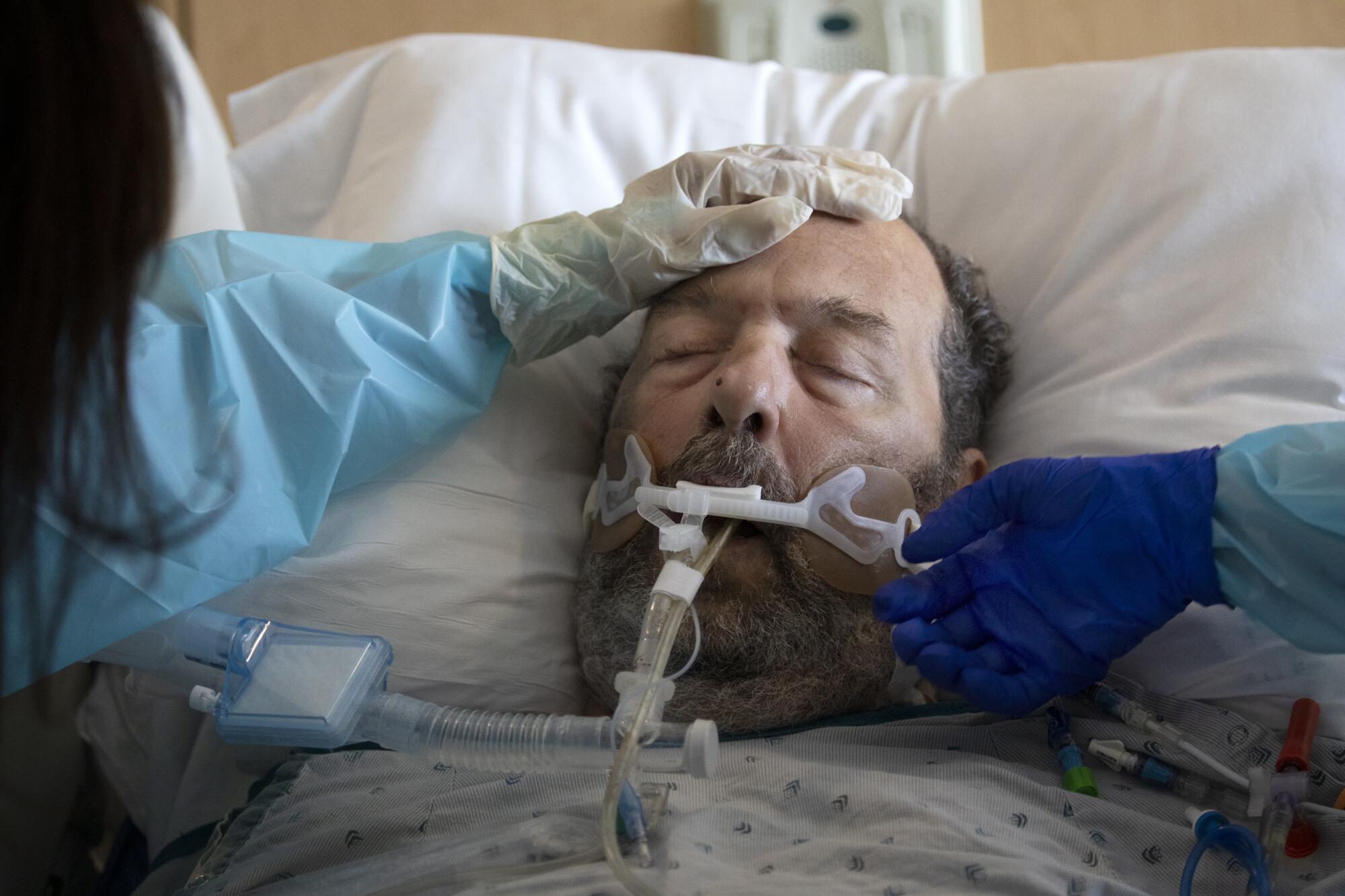
If the ventilator was turned off. If he was about to die.
“Remember, this is Bob and Bob’s wishes,” Dr. Marwa Kilani told the Harrises during a noon family conference. She was on speaker phone, surrounded by the hospital’s palliative care team. They were crammed into their tiny office on the hospital’s third floor.
“We need to be Bob’s voice. What’s the best thing for Bob?” asked Kilani, medical director for palliative care at Providence Holy Cross. “I know what you want for Dad. I know what you want for your husband. But you’ve got to tell me what Bob would be saying.”
Palliative care is the medical specialty that helps improve the quality of life for patients with serious illnesses — everything from the curable, such as trauma or certain cancers, to those that bring people to the end of their days. It aims to support the whole patient and the whole family with nurses, social workers, chaplains and doctors.
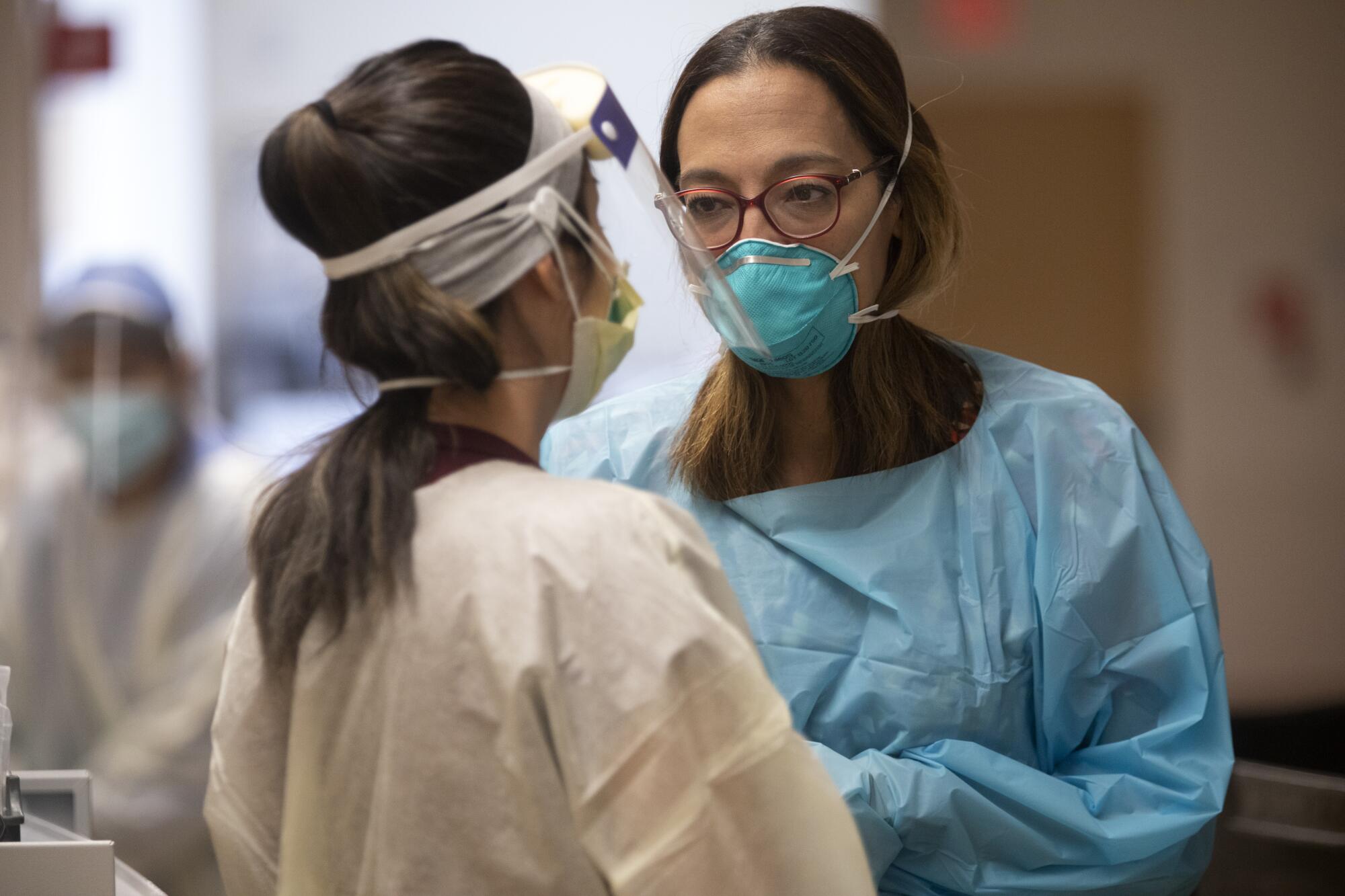
It is difficult to find a circumstance that has hit Kilani’s team as hard as the pandemic. Before the coronavirus swept through Los Angeles County, infecting more than 636,000 and killing nearly 9,000 people, Holy Cross’ palliative care team averaged about 20 cases at any given time. In early December that caseload hit 60. In one recent four-day period, 12 of the team’s patients died.
During the second week in December, the hospital’s COVID unit reached capacity, and there was no longer room for families to visit loved ones as they died of the virus. On Monday, a member of the palliative care team tested positive.
Caught between the virus and the Trump-era crackdown on immigration, the elderly couple is trapped indefinitely in Southern California.
Holy Cross has cared for more than 1,350 people with COVID-19 since March. The current surge has forced the hospital to turn basement lab space into patient rooms. COVID-19 patients now take up the hospital’s entire recently expanded south tower. Half of all palliative care patients have the virus.
Many face harrowing choices.
Or, as in Bob’s case, their families do.
Hope he lives or help him die.
::
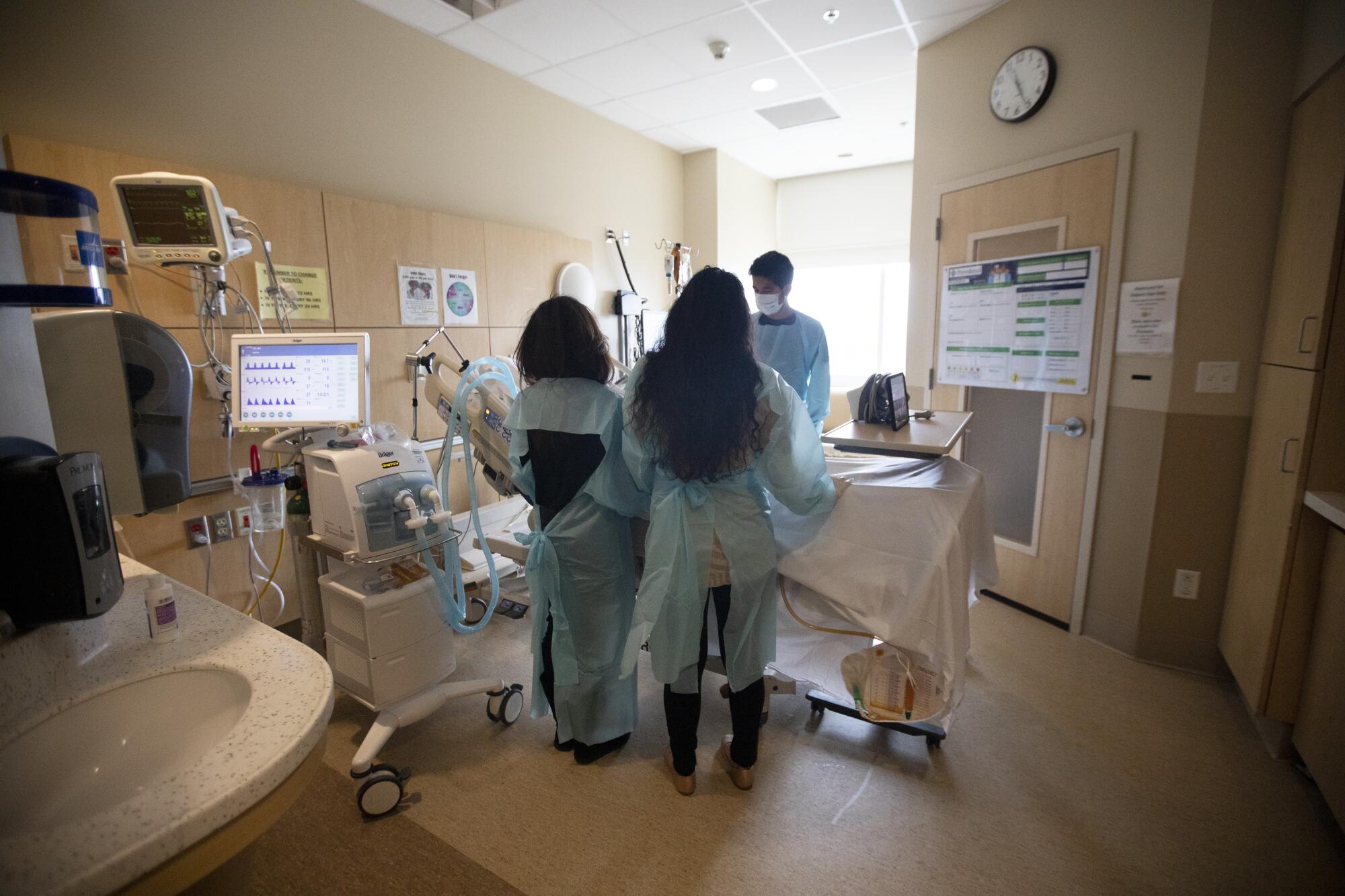
Kilani was a medical student in the 1990s, during the last health crisis that rocked the nation, when HIV/AIDs spread pain and panic. The similarities between that disaster and this one are glaring: The stigma. The victim blaming. The inequity.
Both diseases, she said, lay bare the wide chasm between the haves and have-nots, between who gets good care and who has little access to treatment. In both crises, patients have been viewed, at least for a time, as “untouchables.”
Which is why she does not wear gloves as she makes her rounds in the COVID unit. Touch, she said, is healing. Her hands are raw from constant scrubbing and sanitizer, her nails, dry and split.
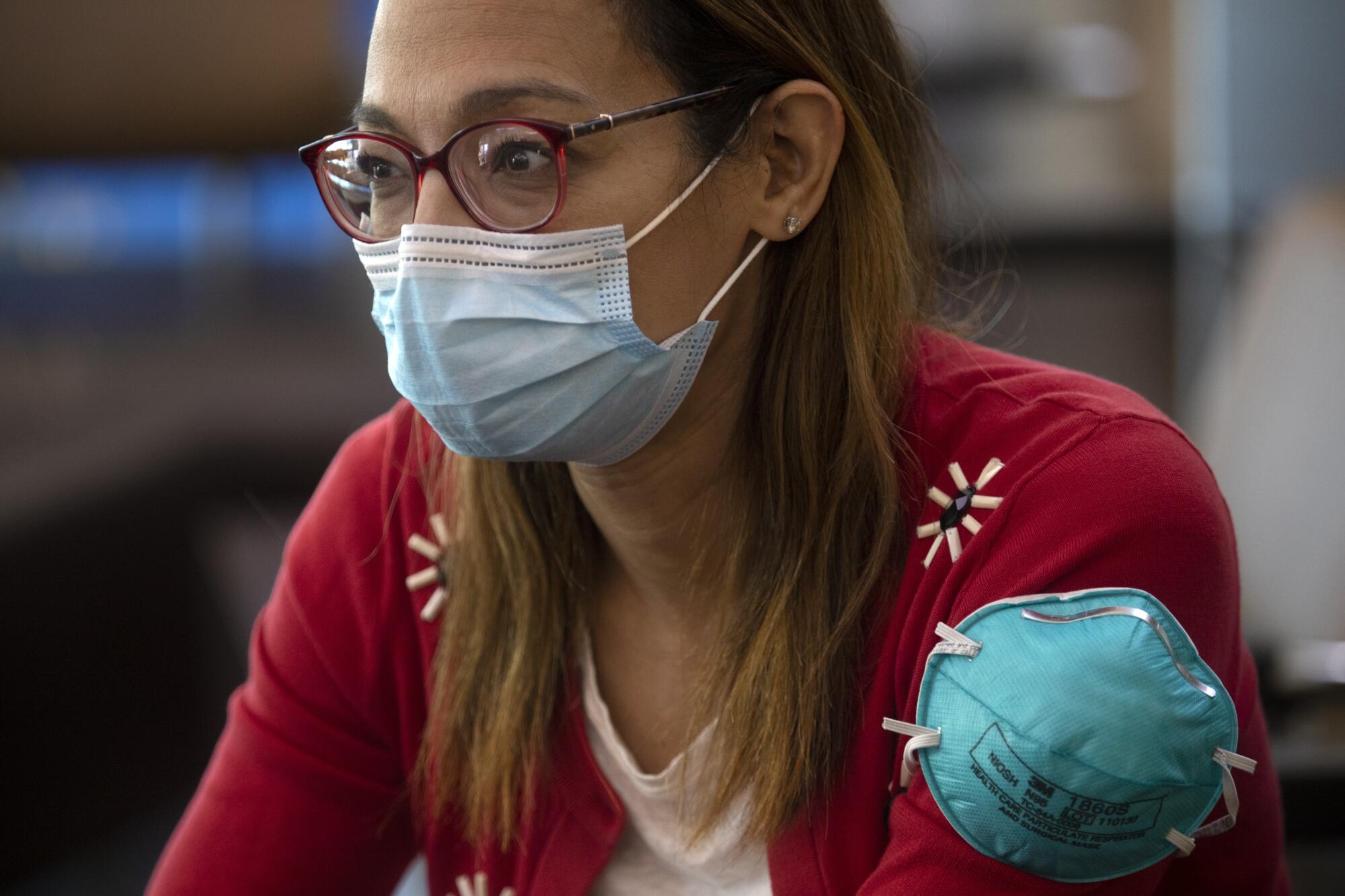
Because hospital visits are largely banned in the age of the coronavirus, the palliative care team often steps in, she said, as a kind of “substitute family at the bedside of a patient.”
The core team includes two nurses, two chaplains, one nurse practitioner and a social worker. They focus on pain and symptom management, on advance care planning, on helping patients and families navigate an alien and often frightening system.
The pandemic has made that work more complicated, for patients with COVID-19 and those without. Family meetings are on phone or video. Time with patients is cut short. And along with everything else, the team must treat yet another terrible ailment.
Loneliness.
Kilani checked in one recent Friday on a COVID-19 patient who — on paper at least — was steadily improving. His vital signs were good. He’d needed less and less oxygen as the days went by. But when she asked him how he felt, his answer was dire.
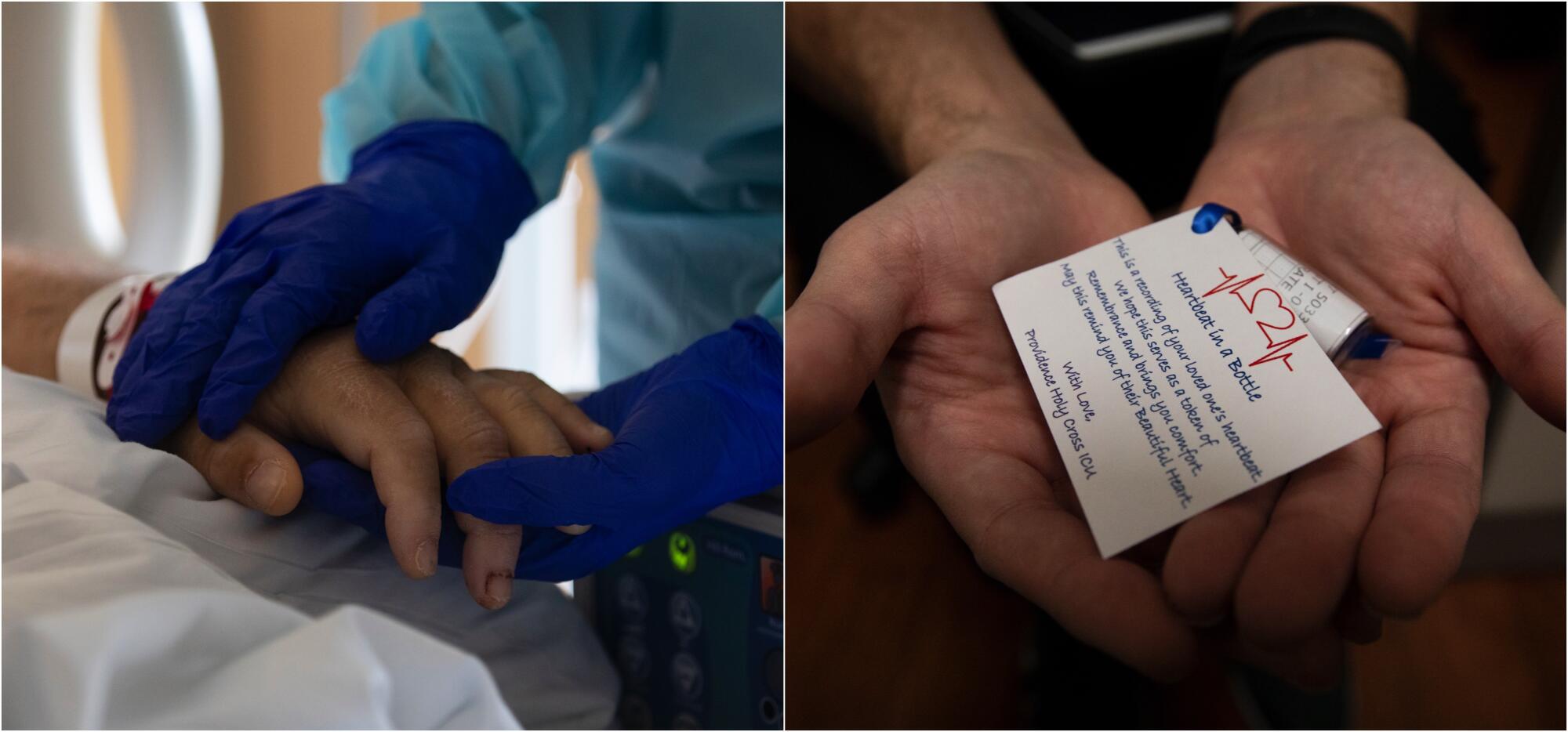
“I feel like you took too much blood out,” he told her. “I feel so weak.”
His appetite was gone. He hadn’t eaten breakfast. She asked if he would like some coffee, brought him a cup and sat with him.
“He looked at me like he wanted to cry,” she said. “It was heart-wrenching. … I feel it’s the loneliness and fear that overwhelms him.”
He has a lot of family members for support, she said,
But they feel so very far away.
::
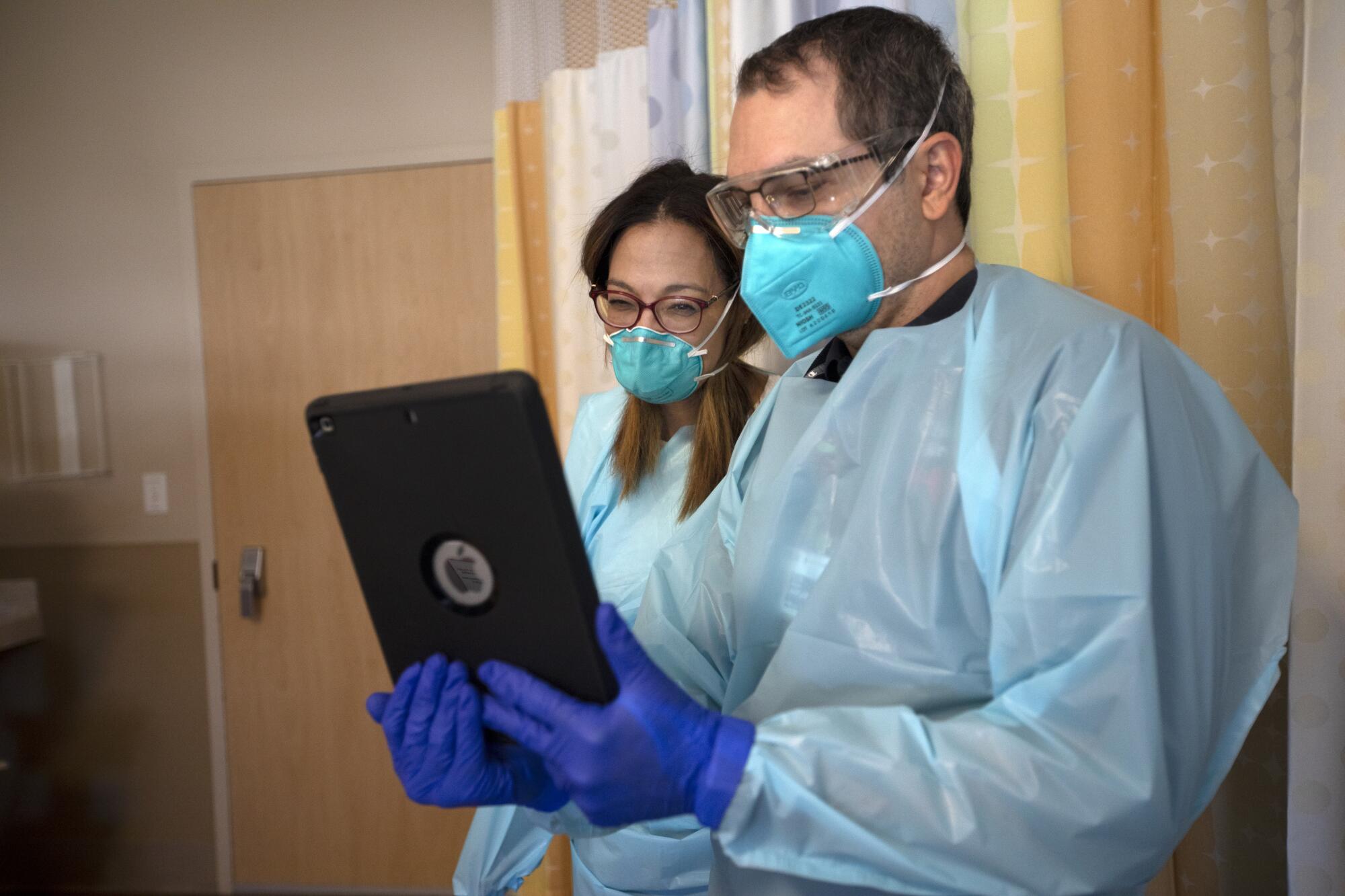
Kilani walked into Bob’s hospital room two weeks after he was admitted. He was on 100% high-flow oxygen delivered through a tube in his nose — the last step before intubation — but the oxygen level in his blood was “horrible,” she said. Healthy people have an oxygen saturation level of around 98%. Bob’s was in the mid-80s — even with the supplemental oxygen.
Their first conversation came immediately to the point.
Bob: ”I’m dying.”
Kilani: “You’re not dying. We’re going to take good care of you.”
COVID-19 can cause blood clots, stroke and other maladies, but Bob had straight-up lung disease. The virus had caused so much damage that his lungs were failing. He had already told his attending physician, and anyone else who would listen, how he felt about ventilators.
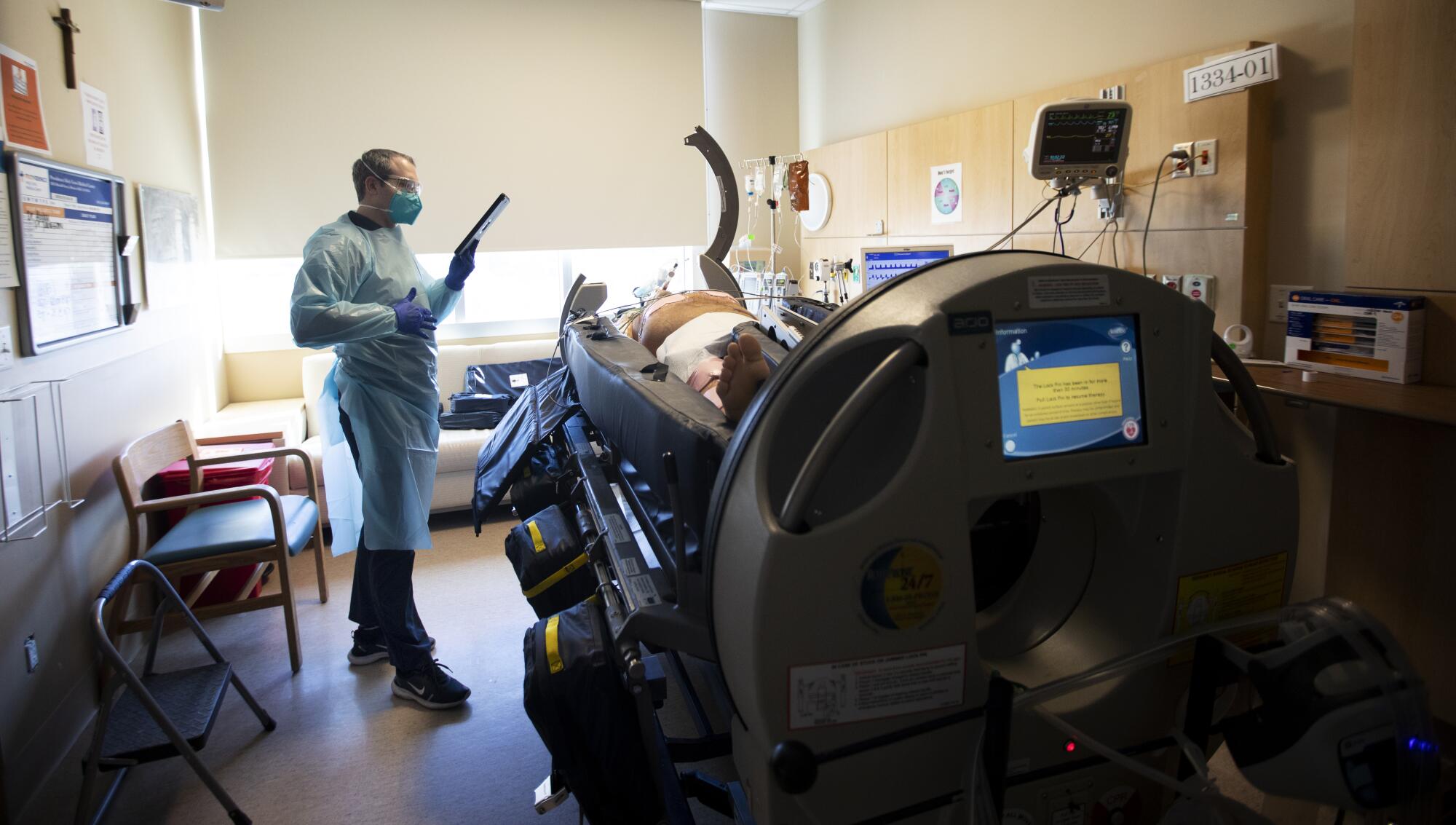
“He’s at peace, ‘if Jesus says it’s my time,’” Chaplain Kevin Deegan wrote in his consultation notes. “Robert says he’s not afraid of being dead, but of the dying part.”
Being on a ventilator hurts. Patients often try to pull out the tube that goes down their throat and into their lungs, so they are given anti-anxiety medication, pain killers and sedatives. In the most serious cases, like Bob’s, they are also given a drug that paralyzes them.
‘I just feel like my dad would want to keep fighting. I feel like we’ve got to give him more time.’
— Michelle Harris, daughter
Bob also was strapped into a mechanical bed, which rotated him so that he was lying face down. He was in that prone position for 18 hours each day — six hours face down, then two face up and on and on. It allowed his lungs to function more effectively. It also caused his face to swell.
That was the reality facing Marilou, Michelle and Michael on Dec. 4, during their regular Friday family meeting with the palliative care team.
Kilani, Deegan and the rest of the team who had been caring for Bob since the middle of November gathered around the phone on Kilani’s desk. The hospital’s ugly Christmas sweater contest was coming up, and a stack of garish woolens was slumped nearby.
First there were updates on Bob’s deteriorating condition. Then, the question. What now?
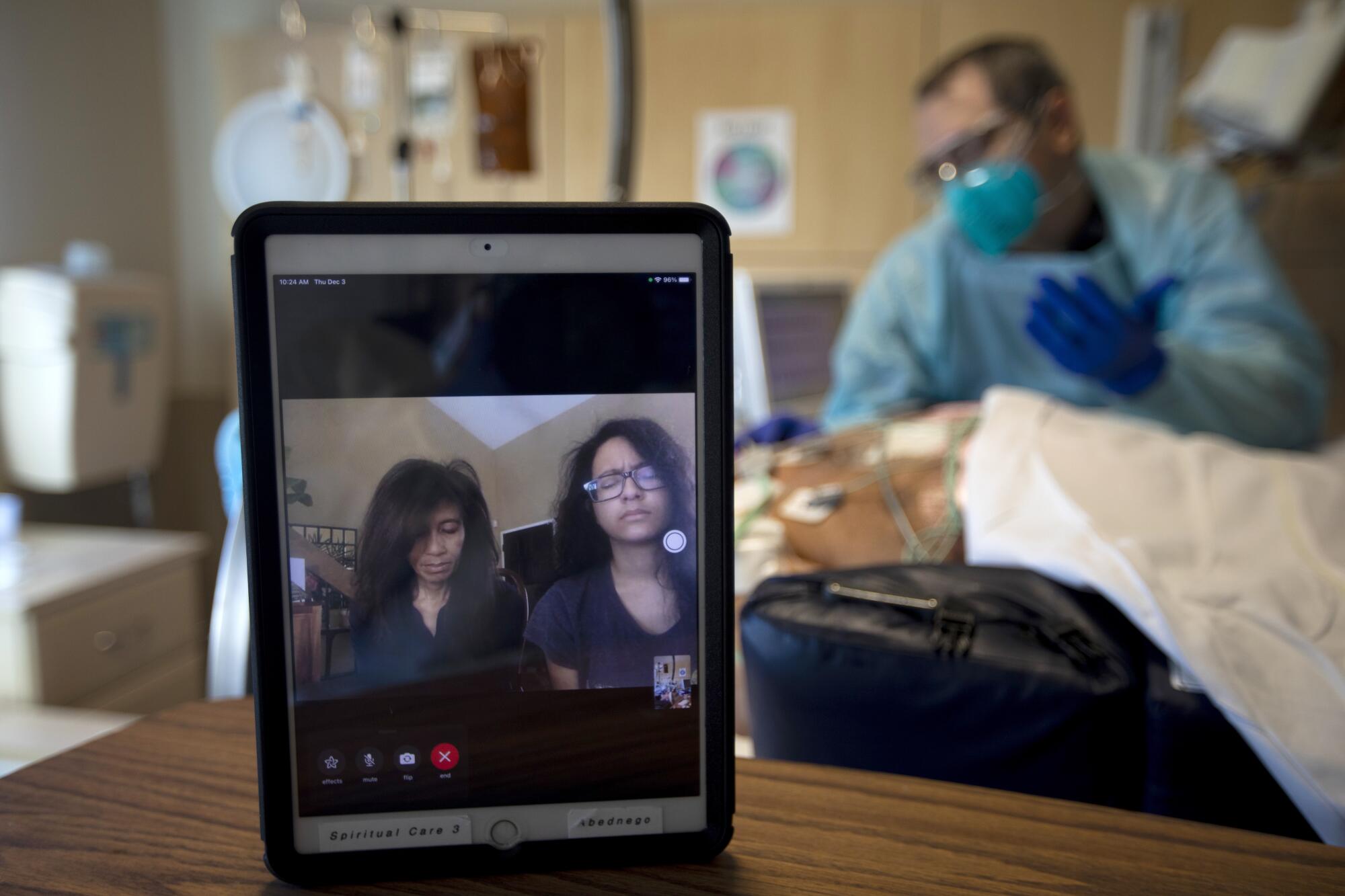
Michelle spoke first. She is 25, an actor. While her father was in a medically induced coma, she would play guitar and sing to him via an iPad that Deegan would set up in his room.
In 2016, Michelle’s friends were trying out for Halloween Horror Nights at Universal Studios. She decided to give it whirl, maybe get a part as a victim in a maze. Since he was there anyway, Bob, a Messianic Jew who once gave stand-up comedy a try, auditioned too.
They were asked to do their best death scene. Michelle “did this big dramatic thing,” she said, and fell to the ground as her grand finale. Bob choked and grunted, swore, “you’ll never take me alive,” and died standing up.
And got the job.
“He’s not even the actor in the family,” Michelle said, laughing. “He also got to be Twisty the Clown in the Horror Nights commercial. It was just a few seconds. A girl screams, he dances away. … He got residual checks.”
How do you say goodbye to a man like that in the middle of a pandemic?
“I just feel like my dad would want to keep fighting,” Michelle told the palliative team. “I feel like we’ve got to give him more time.”

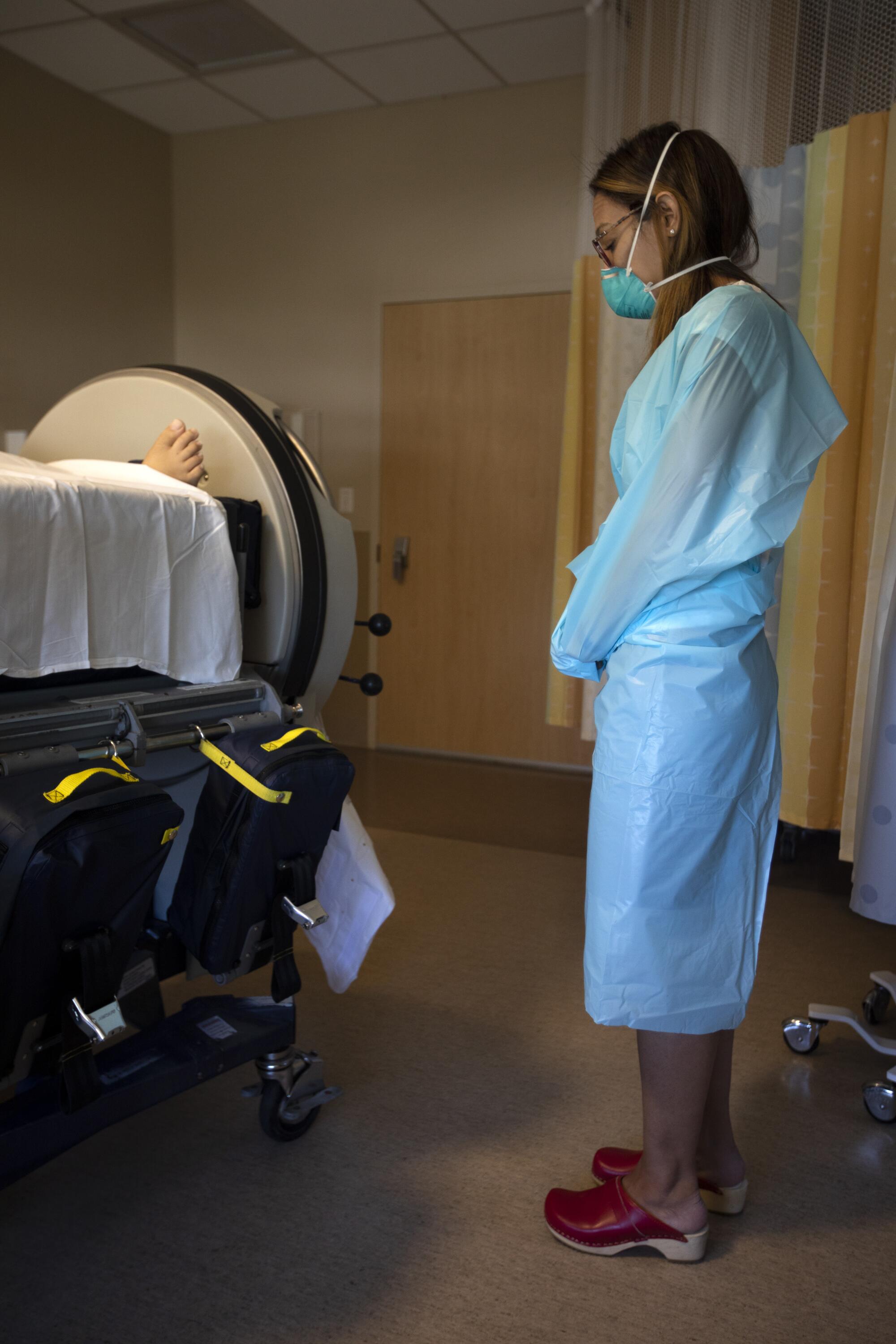
The team members, startled, looked at each other as if to say, “Oh, no, they’re going to want to continue,” Deegan recounted. “It’s against his wishes. What are we going to do?”
When Michelle was done, the chaplain asked Marilou what she was thinking at that difficult moment.
“I’m sorry, honey,” she began. “I just have to say, I feel really differently than Michelle does.”
Michelle began to cry, her sobs carrying over the phone line.
Clear patient wishes. Conflicted family. It was time to call the ethicist.
D.W. Donovan’s formal title is chief mission integration officer, which sounds more NASA than Holy Cross. But the former Catholic chaplain’s task is a completely human one — among other duties, to help patients, families, doctors and the hospital as a whole answer a daunting question.
Very little is known about the impact of COVID-19 on women and the babies they carry.
Just because we can do something, in this case, keep a patient alive for an unknowable amount of time, should we?
The answer, for Bob, was no.
“There’s no realistic medical chance that the patient will be able to be weaned off the ventilator without undergoing a tracheostomy,” Donovan wrote in Bob’s electronic file.
“Given his prior statements, even as amended, it now seems most ethically and morally appropriate to honor the patient’s wish not to prolong the period of intubation, to extubate him and to allow natural death.”
::
Marilou, Michelle and Michael walk into room 1306 just after 11 a.m. Dec. 7. They have donned protective gowns and gloves. The two women wear double masks.
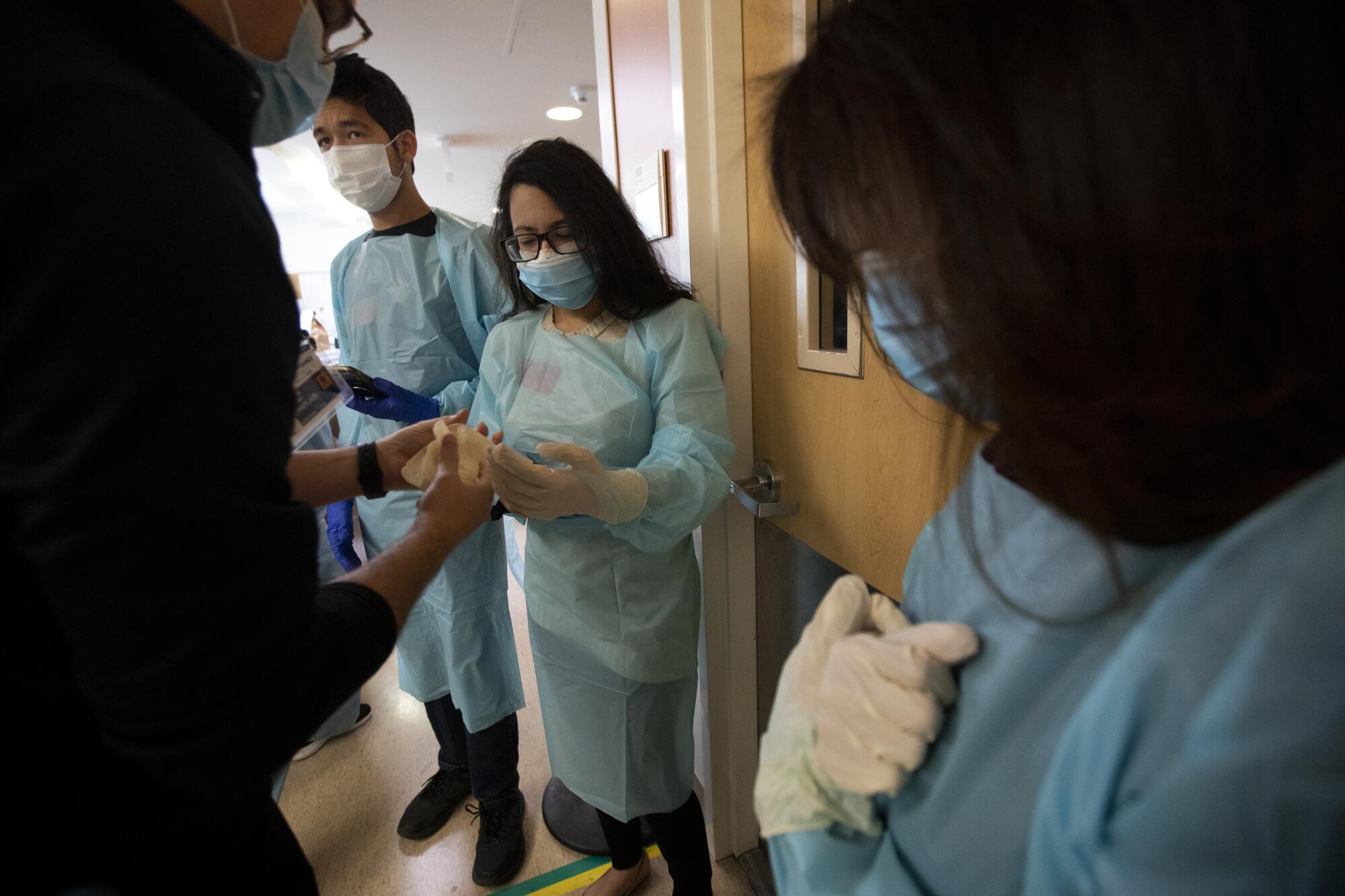
Michael, who is 19, tall and grief-stricken, stands to his father’s left. His gloves are cobalt blue. His hands rest on Bob’s arm. He will barely move for the next half-hour or so. Marilou stands at her husband’s right shoulder. She strokes his arm. Michelle reaches over and places her hand on Bob’s forehead.
Bob lies, motionless, in the hospital bed. He has grown a salt-and-pepper beard since he left his West Hills home 39 days before. The ventilator is strapped to his face by a slender band. A clear tube comes out of his mouth and rests on his gray-gowned chest. It is connected to an oxygen source by thick blue tubing.
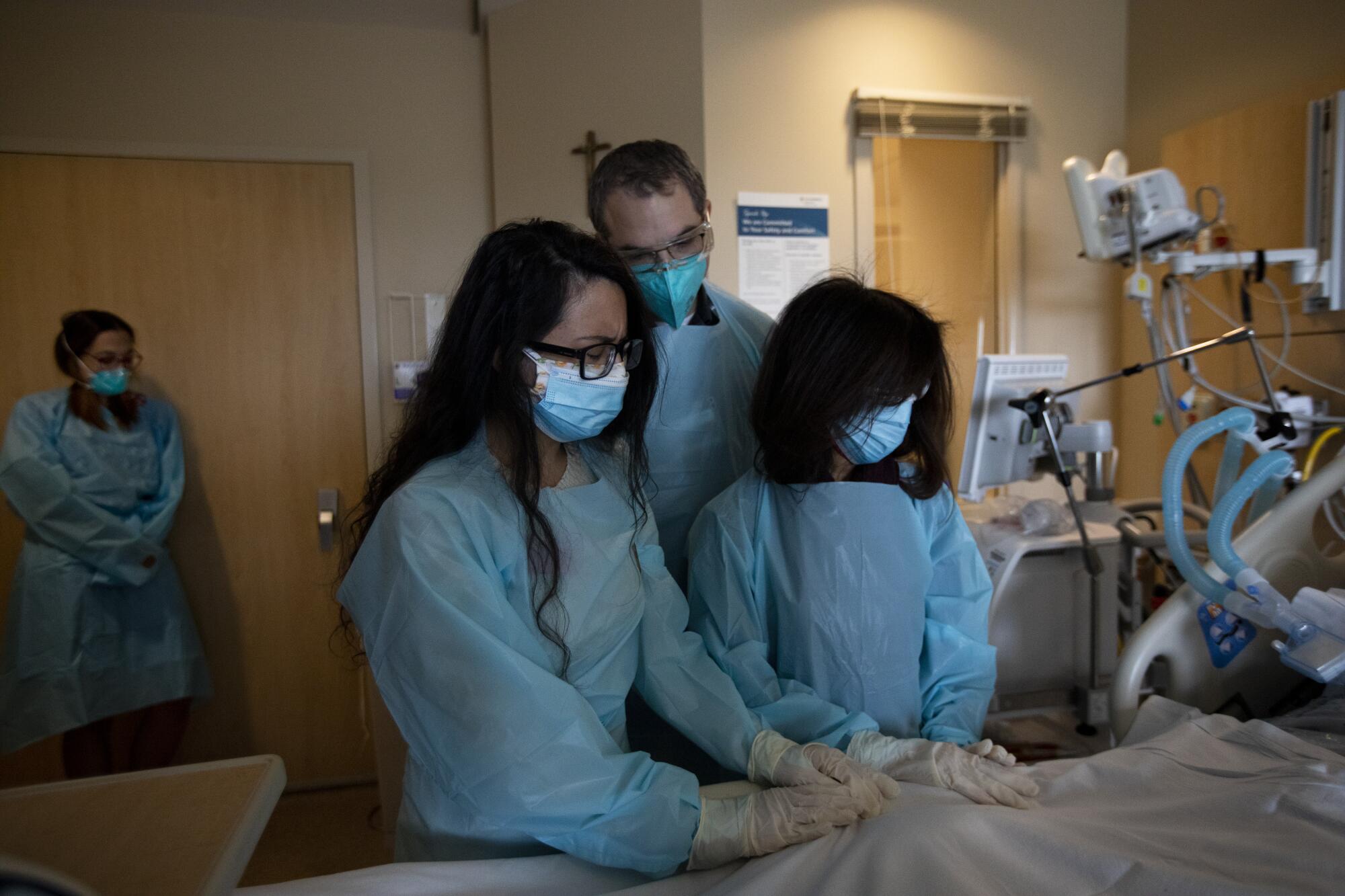
His chest rises and falls with the machine’s rhythm. His eyes are closed. His loved ones look and look and look at the peaceful face before them.
In the hallway of the COVID ward, Deegan holds an iPad, monitoring Bob’s friends and family members as they call in to say goodbye via Zoom. Even before the session begins, nearly 80 people have joined. A disembodied voice asks the chaplain to pray with them.
“Loving and merciful God, we come before you yet again,” Deegan begins. “... You know the prayers of our heart. You know how we cry out to you. We’ve sung songs to you in worship. We are here yet again on a difficult day.”
A nurse removes her face shield, wipes tears from her eyes above her masks, a teal N95 number beneath a yellow surgical covering.
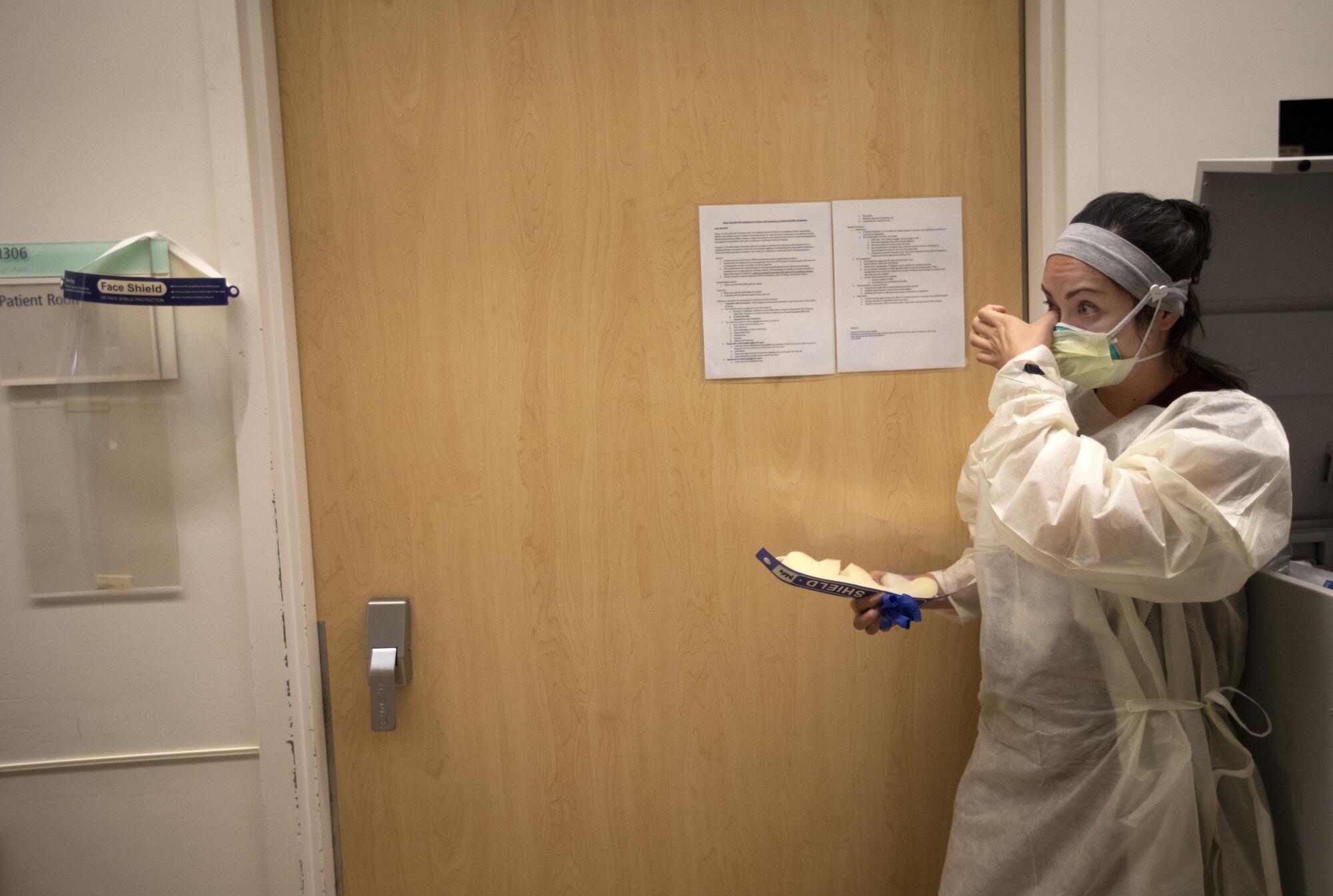
Deegan enters 1306, places the iPad on a table at the foot of the bed and a stream of loving voices warms the room. They laugh. They choke up. A little girl calls out: “I love you, Uncle Bobby.” The chaplain places his gloved hand over his heart.
Kilani stands beside Deegan at the foot of the bed. She nods as the sweet words pour into the room. Her arms are wrapped tightly around her midsection. She hates goodbyes. She walks to the door, bows her head, stands silent. And listens.
I don’t want to say goodbye to you, Bob. I don’t want to.
You were our first neighbor. We shared the Northridge earthquake ... watching our kids grow. We love you, good and faithful servant.
Hey, Bob, this is Pastor Neal from the Church at Rocky Peak ... The Lord turn His face toward you and give you peace, Bob.
You let me drive at 13. You made such a positive impact on my life. I will never forget it. I will always talk about you, forever.

The call is over. The room goes quiet. The family prays, says goodbye, files out and into the rest of their lives.
The respiratory therapist turns off the ventilator. A nurse turns the light down. Kilani strokes Bob’s brow. Deegan holds his feet.
Bob is breathing on his own. His heart rate slows, bounces around and slows again. The monitor flashes the number of times his heart beats in a minute:
Forty.
Six.
Zero.
Times staff photographer Francine Orr contributed to this report.
More to Read
Sign up for Essential California
The most important California stories and recommendations in your inbox every morning.
You may occasionally receive promotional content from the Los Angeles Times.
